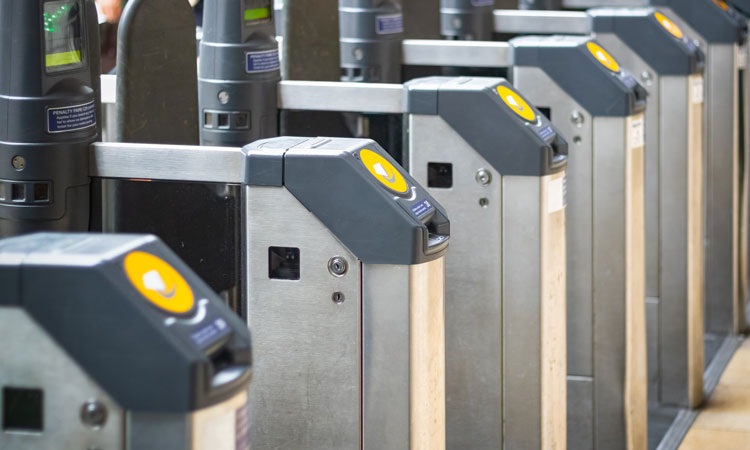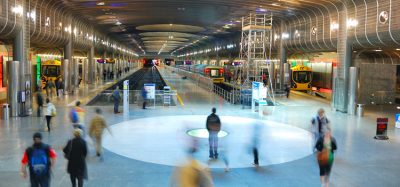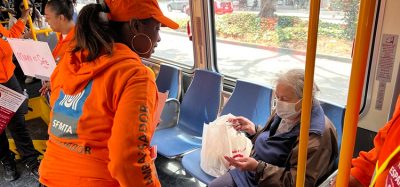Contactless travel: here today, more tomorrow
- Like
- Digg
- Del
- Tumblr
- VKontakte
- Buffer
- Love This
- Odnoklassniki
- Meneame
- Blogger
- Amazon
- Yahoo Mail
- Gmail
- AOL
- Newsvine
- HackerNews
- Evernote
- MySpace
- Mail.ru
- Viadeo
- Line
- Comments
- Yummly
- SMS
- Viber
- Telegram
- Subscribe
- Skype
- Facebook Messenger
- Kakao
- LiveJournal
- Yammer
- Edgar
- Fintel
- Mix
- Instapaper
- Copy Link
Posted: 19 January 2021 | Mike Tuckett | No comments yet
Mike Tuckett, Head of Customer Payments at Transport for London, tells Intelligent Transport how payment habits have changed during the last 12 months, and how cross‑network contactless travel could become a reality for the UK.


How important is it for TfL to continue pushing the contactless message to those who are still travelling, to ensure they adopt a method of travel that keeps them safe, but also keeps the rest of the travelling public, stations and vehicles safe as well?
MIKE: Pre-pandemic, we observed strong growth in contactless, thanks to a big shift from people who used to buy travel cards, and some shift from people who used to buy Oyster cards. Nevertheless, it always appeared to us that there were many, many more who would benefit from using it, in particular visitors to London who still tend to be told by travel websites that they need an Oyster card to get around London.
To some extent, some of our own in-station messaging reinforces this where it shouldn’t; in our stations, signage still points users towards ticket machines. Even now, the idea that you don’t need a ticket to travel is just that little bit to revolutionary for people just to assume they can do it. It has been fantastic that so many passengers have embraced contactless, but there’s so much more of the market that could utilise it – and our job now is to make those people aware of it and give them the confidence to try it.
As we move on from the pandemic, we don’t expect customers to go back to what they did before. Current circumstances have just brought forward changes taking place already. It’s a general trend – contactless has surged across the retail world.
Another element in this is the number of contactless payments being made using smartphones. Just before lockdown, in February and March of this year, we tipped over 25 per cent of contactless transactions being made on mobiles.
One thing that has helped has been all the mobile payment schemes now allowing users to interact with a transit reader without having to use Face ID or Touch ID to unlock their phones first. This has created something of a step change in the usability of mobile devices.
Are there any plans on the horizon for TfL when it comes to other types of new contactless technologies, such as CiBo or BiBo?
MIKE: We want to avoid over-complicating contactless for our users – the whole idea of introducing contactless is to remove barriers to choosing public transport. Oyster was our first step in that journey, removing the need to buy single-use tickets, and contactless takes that notion further by removing the need to even top up a card.
With contactless in its current guise, it feels as though we’ve almost reached the ultimate point of simplicity for travel. Even though users can register their card with us, the vast majority of people – over 95 per cent of new cards that we see enter the system – never do so; they literally just travel and get their bill. Most choose to look at their daily bill on their banking app rather than look at any specific breakdown of the services they’ve used during the day. What this tells us is that people appreciate how uncomplicated and trustworthy the system is, they don’t want to enter into a relationship with us that is any more complex than it needs to be.
We’re sometimes asked about biometrics, but I cannot imagine there are many people who would want to register those details with public transport providers, potentially giving up quite personal data in the process, just for the convenience of having a fingerprint read. What we have currently fits into the public transport environment really well, so why change direction?
One of the crucial things to understand here is consent. When we were developing our contactless system, there was a lot of back and forth with the payments industry to create the model. One of the issues was the need for clarity of consent that the customer is giving for you to take money from their bankcard. At that time at least, the payment industry viewed that conscious action of reaching out and touching a card on the reader to be a necessary step to show user consent. That’s really important in this environment because the user isn’t seeing the value of the transaction like they would when using contactless in a shop.
There are also physical barriers to BiBo in London. The Underground is overwhelmingly barriered, and there are all kinds of reasons why we want it to stay that way (e.g. crowd control). There are cities across Europe that are quite the opposite and almost completely open. The business case for BiBo is really sensitive to where it will be rolled out.
Part of the future of contactless has to be to help expand networks and make them join up – how do you take a system like TfL’s and adapt it to support travellers to the city from further afield?
MIKE: TfL has now been working on smart travel for the best part of a quarter of a century and has been gradually adding new services and areas around London to the original application on the Underground. Carrying on with these extensions is clearly of value to all rail users across the south east and, where we can, we will look to implement these, working with the train companies and the DfT.
For longer journeys, we have identified a concept that would, in principle, make it possible for contactless to be available for any rail journey in Britain. Its application would be primarily for longer distance travel, not for trips inside the London zones so it’s not something that we would prioritise spending money on ourselves or working up in detail. However, if the appetite and ambition was there, we would certainly work with third parties to fund and develop it.
The basic concept is simple enough and would mean the contactless readers in an area like London treating a contactless card or phone payment app as a token for a ticket that has already been bought and paid for, meaning that a contactless fare should not be charged.
Ultimately, the trick is going to be to make a system of this kind work across multiple authorities. If someone were travelling from London on an intercity train to Newcastle and could then use the same contactless card or payment app to travel on the Metro in Newcastle, both the London and the Newcastle systems would need to know that the traveller shouldn’t be charged a PAYG fare because the card was already valid for the journey they’ve made.
Even taking the area around London as an example, someone travelling from Reading to Southend via Central London could well be paying around £40. Someone making that trip might well prefer to pre-purchase for a journey at that price rather than use pay as you go.
The attraction of the concept is that it would enable travellers to use the same card and validators in London, as they would when making a journey using PAYG. At the same time, it would mean TfL would not need to install new equipment at stations to read barcode tickets – which do not work very well in a mass transit environment.
The retailing of long distance tickets would remain much as today but the retailer would need to pass across enough details of their ticket sales to enable the contactless back offices, in London say, to know not to charge additional contactless fares to cards acting as tokens. We’d have to agree some secure protocols for that.
In this world, it could well make sense for customers still to be issued with a barcode as a fall‑back – much as you’d still want a printable record of your purchase.
I don’t think there’s anything over ambitious here – technologically or organisationally – but connecting back offices and sharing customer data are issues that we would have to work through to realise this vision. We know that introducing changes like this is not going to happen overnight and, as always, the devil is in the detail. But in our view, the concept of a contactless token to provide simple, hassle-free travel across the whole country is potentially a very viable solution to a problem that has plagued people for a long time.


The rest of this content is restricted - login or subscribe for free to access
Thank you for visiting our website. To access this content in full, you'll need to login or subscribe.
It's completely free to subscribe, and in less than a minute you can continue reading. If you've already subscribed, just login.
Why subscribe? Join our growing community of thousands of industry professionals and gain access to:
- Quarterly issues in print and/or digital format
- Case studies, whitepapers, webinars and industry-leading content
- Breaking news and features
- Our extensive online archive of thousands of articles and years of past issues
All for free!
Click here to Subscribe today Login here
Related topics
COVID-19, Passenger Experience, Public Transport, Ticketing & Payments
Issue
Issue 4 2020
Related modes
Bus & Coach, Light Rail, Train, Underground
Related cities
London, United Kingdom
Related organisations
Transport for London (TfL)
Related people
Mike Tuckett








